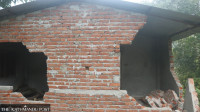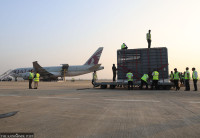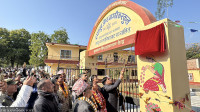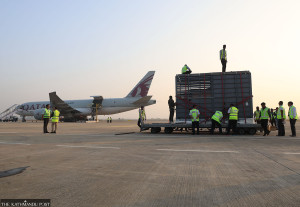Lumbini Province
Forty-two years on, Lumbini Master Plan is still incomplete
The plan is expected to be completed within the next three years, with authorities recently hiring a new consultant company for the job.
Madhav Dhungana
The Lumbini Master Plan, conceived 42 years ago, was developed with a sole ambition: to develop Lumbini, a historical site that sprawls across three square miles in the country’s plains.
Till date, the plan has absorbed more than thrice the budget that was initially estimated and seen 38 deputy chairpersons (federal minister of tourism assumes the role of the chairperson)—all of whom, upon their appointment, vowed to lead the plan to a logical conclusion.
Fast forward to the tail end of 2019, and only 85 percent of the work is completed, inviting criticism from all quarters towards the government and the Trust. Many say the snail’s pace of work has affected the identity and glory of Lumbini.
“When a project remains incomplete for all these years, it’s obvious that criticisms will arise,” Abdesh Kumar Tripathi, the Trust’s incumbent deputy chair, said. “But it’s not been too long since Lumbini was inducted as a national pride project. And now the work is moving forward.”
Tripathi said the remaining work will be completed within three years.
Fifty years ago, in 1967, an international committee—comprising 13 Buddhist countries—was founded to develop Lumbini as a major Buddhist destination. The committee was anchored by U Thant, the then Secretary-General of the United Nations, who visited Lumbini and called the international community to support Lumbini’s development. The committee was a result of Thant’s efforts.
The master plan was designed by Kenzō Tange, an eminent Japanese architect, and was approved by the Nepal Government and the United Nations in 1978. The plan was supposed to be completed by 1995. In 1985, the Lumbini Development Trust was established to accelerate the work.
Led by Tange, the committee formulated the extensive master plan in 1978. The plan demarcated the three square kilometres of Lumbini into three zones—the Sacred Garden, the Monastic Zone, and the Cultural Centre and New Lumbini Village. There’s little hint when these zones will come to full being.
Like almost all quarters of the Nepali cultural life, political interference, many believe, is what has hindered the project from being completed. “The main reason that the master plan hasn’t yet come to fruition is the appointment of the deputy chair of the Trust on the basis of political affiliation,” Fakharuddin Khan, a member of Province-5 parliament, said. “The change in government directly affects the plan.”
Khan further said that the deputy chairs of the Trust don’t get enough time to enforce their vision, with their tenure cut short with every change in government. “Another problem is that those appointed through their political affiliation can’t go beyond their party agendas,” Khan added.
Despite decades-long delays, however, the plan is now coming to fruition, according to Saroj Bhattarai, chief of plan and member-secretary of Lumbini Development Trust. “We are soon consulting with experts regarding the design, manpower and inspection of the remaining work,” he said. “We will issue a tender immediately after the discussion.”
The Trust took a year to select the consulting company, Telecommunication Consultant of India JV CIAAS Nepal, which will provide the roadmap to complete the remaining work of the project, which will take about Rs 6 billion, according to Bhattarai. Bhattarai said that the consultant has been given a clear order to formulate a plan to complete the project within three years.
The remaining work includes the building of Lumbini Culture Centre, an auditorium, a drinking water tank, footpaths, a parking lot, residence for employees, a blacktopped road, diversion of Telar River, beautification of the entire site, electricity supply, and telecommunication, among others.




 10.12°C Kathmandu
10.12°C Kathmandu












%20(1).jpg&w=300&height=200)

